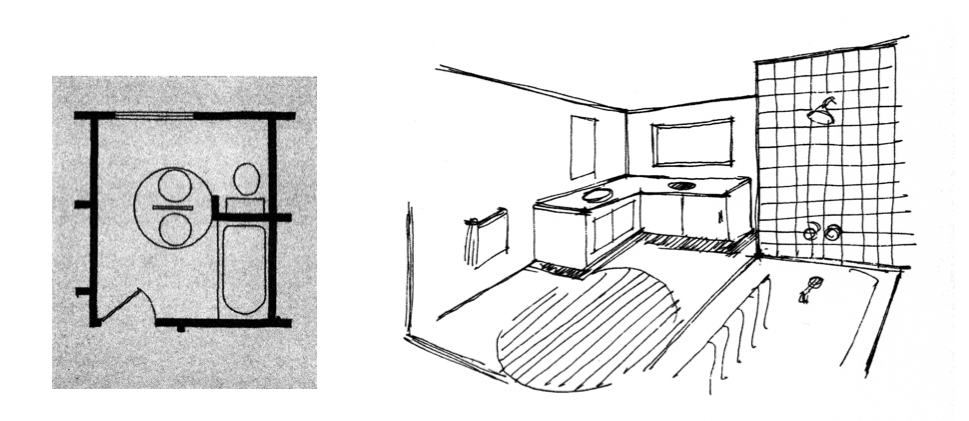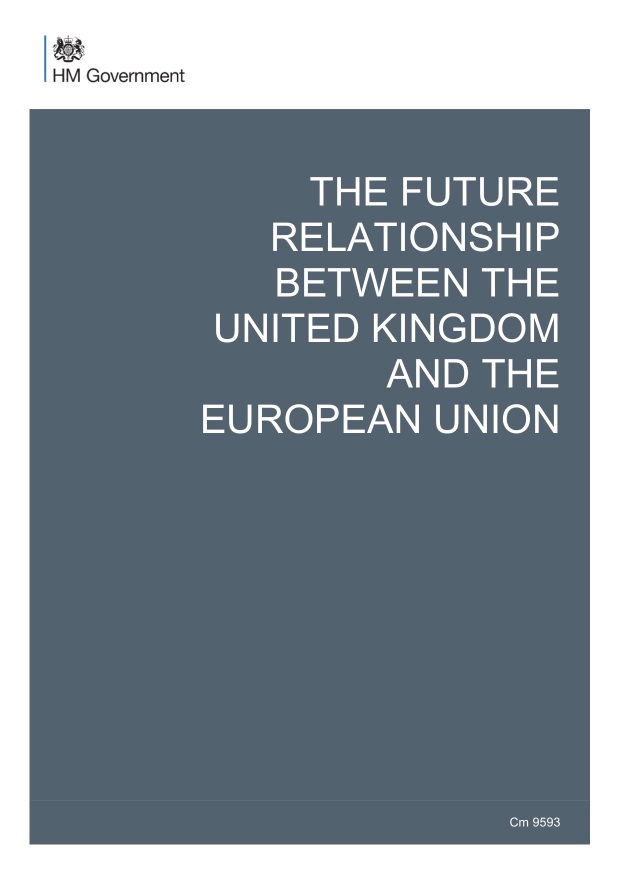Note: This Editorial was written to be published in Volume 88 of Design Studies alongside the paper ‘Global Diversity in Design Research‘, which was published in Volume 88. Although accepted for publication, the Editorial was subsequently withdrawn by the journal following my resignation as Editor-in-Chief. My resignation followed a dispute with Elsevier after a new Editor-in-Chief was appointed without consultation with any of the editorial team or Editorial Board. The entire Editorial Board of Design Studies, the Deputy Editor, and other Associate Editors also resigned in solidarity and outrage. I comment briefly on what happened at the end of this editorial and fuller accounts are available elsewhere.1
In past volumes of the journal we have occasionally published work looking at the structure and character of the design research discipline through bibliographic study. Though not concerned with progressing ideas about the design process, the core interest of Design Studies, such work is felt by the Editorial team to warrant publication since the audience the work addresses is primarily a design research audience, not a bibliographic studies audience (Cross 2012). In 2012, two such papers were published. Gemser et al (2012) looked at the perceived quality of design research journals through a survey of 11292 editors and members of editorial boards for journals publishing work in the Industrial Design discipline. In the same issue, Chai and Xiao (2012) looked at citation patterns in Design Studies from 1996-2010 to understand the network of authors and journals as well as core and emerging research themes. In a follow up study to their 2012 paper, Gemser and de Bont (2016), looked at publication patterns of institutions and authors from 2000-2009, between what they distinguished as ‘design-relevant’ journals and ‘design-focussed’ journals, again in the broad field of Industrial Design.
Through their independent research, and with their different approaches, these papers have shown the prestige and value that Design Studies has in the field of design research. Gemser et al (2012) concluded that “Design Studies and Design Issues are perceived to be the best journals publishing articles related to the industrial design field.” (p.19) citing the rigour of editorial review processes as a likely significant determinant of this perception. Similarly, Chai and Xiao concluded that “Design Studies is the main source of knowledge for design research” (p.38) choosing to look at citation patterns in the journal because it is “the only comprehensive and interdisciplinary journal on design research” (p.26). Interestingly, Gemser et al (2012) note that, for design research, impact factor and other citation metrics, although enhancing visibility, are not good measures of quality or intellectual rigour. This is something recognised by the 2012 San Francisco Declaration on Research Assessment (DORA)3 to eliminate the use of metrics, such as impact factor and h-indexes, as surrogate measures for research quality. The declaration has been signed by over 23,000 individuals and organisations in 161 countries and has had significant consequences for publishing organisations in particular. This is a subject to which I will return later in the Editorial.
The papers by Gemser et al and Chai and Xiao were certainly not without their critics (e.g. Walker 2016), but they represent substantive reference and reflection points for the design research community, particularly in their identification of the diversity of geographical regions and progressive internationalisation as contributors to the design research field. Since 2012, there have been significant developments in design research, reflecting wider changes across the globe. The movement to decolonise design has found significant traction, along with related calls for the field to fundamentally embrace more inclusive, diverse, and pluriversal approaches. These themes form the context for the bibliographic paper by Trindade Perry and Soares Pereira (2023) published in the current Volume (88) of Design Studies which explores the global diversity of the design research discipline. Whilst Gemser et al and Chai and Xiao concluded positively about the growth of geographical regions in publishing and citation patterns, Trindade Perry and Soares Pereira are more critical of how publishing in design research has played out in recent years. Through their research they ask some uncomfortable and provocative questions about the discipline.
Their starting point is the same as Gemser et al’s (2012) and Gemser and de Bont’s (2016) – research in industrial design – and builds on the same distinctions and categorisations, but they come from the angle of comparing design practice to design research. If industrial design is taught and practiced throughout the world, as it quite clearly is, why is published design research restricted to far fewer countries, mainly from the global north? Why have the practice (and economics) of design and design research diverged so much, they ask? In exploring these questions, and through the evidence they amass and analyse, the authors ask serious and structural questions about the field of design research and its relationships to what the author’s term ‘peripheral’ countries.
The paper is long but rewards a full reading as a research discipline story that unfolds across time and place. There is rigorous collection and analysis of data, clear acknowledgements about the limitations of the study, and thought-provoking discussion of trends, outcomes, and directions forward. The authors clearly state their criticisms of the design research field:
“Excessive concentration [in design research] is a dangerous thing. It can lead to the false perception that a certain topic holds worldwide interest, or the false idea that a given subject is currently under-researched. It can also lead to claims that certain ways of doing things represent a global preference, when that might be true only for a small and concentrated part of the world. In other words, concentration risks overlooking more diverse viewpoints by labelling them as ‘not adherent’ or ‘not of interest’, and so fostering the emergence of echo chambers.” (p.37)
As a study of journals in the design research discipline there are some clear omissions, as the authors acknowledge – Codesign, She Ji, and Design Science are three journals that do not form part of the analysis – but the patterns they uncover are clear and consistent. Untangling the data for different countries, institutions, co-authorship, etc. is not a straightforward task but the authors do a good job in explaining their reasoning. What the study also reveals is the lack of good data that are available to look seriously at issues of global diversity in publication. A large proportion of this relates to the internal processes of journals. For example, in how they assess submissions prior to peer review. Publishing organisations do have these data, but they are not routinely published.
I think this study represents a foundation for future studies to build from and to test. The authors indicate several avenues for future work, particularly in sketching the development paths, and relationship between economic productivity and design research later in the paper. This implicitly links the value of design research to more general economic and performance indicators, something that hasn’t received the attention it deserves in the literature.
When the paper was first submitted to the journal, in August 2022, I initiated a discussion amongst all Design Studies editors asking for views about possible publication and fit to the journal scope. Though there were critical questions about some of the underlying assumptions and methods of the paper, outlined above, there was unanimity that this was valuable work, looking at an issue of increasing importance, and supporting publication, subject to further peer review. Following a period of peer review and revision, I’m pleased that the paper has now been published.
The process that I have described in the previous paragraph is also one that the authors implicitly, and rightly, criticise in their paper. The Design Studies editorial team are all based in countries of the global north, and decisions that follow from this – editorial discussion as to whether to proceed with publication, who to select to review the paper, making a final decision about publication, etc. all stem from the power of being in this privileged position. Our decisions almost certainly, and however unintentionally, reinforce our idea of what we think should be published in the journal. Many might say that that is precisely the purpose of Editors, to decide about the quality of research and its suitability for the journal4. Editors have much discretion to influence outcomes, as the authors allude to. As Editors and reviewers we might gloss the position we speak, edit, and decide from as being one of ‘shared academic values’, but if this results in a disproportionate global distribution of both publication and editorial personnel, then surely we need to take a hard look at the reasons for this, not least for the long-term health of the design research field.
Issues of diversity, decolonisation, and pluriversality have, again rightly in my view, become increasingly pressing concerns in design research (and design), perhaps more than many other disciplines. Questions of who speaks and how they get heard are far more complicated and tangled then many assume, particularly in more technically-oriented disciplines. But they are fundamentally important, interesting, and necessary questions to explore for design research. Often, they involve issues of identity and power enacted in plain sight. Over the past few years we have begun to publish more work carefully exploring discourses around these questions. These have included papers on design anthropology (Otto et al 2021, Smith 2022), racism (Roudbari et al 2022), decolonisation (Escobar-Tello 2021), contested spaces (Palmieri et al 2021), and climate change (Cotsaftis 2023). Though Design Studies remains a primarily empirical journal, recent Viewpoint papers have provided a forum to explore more provocative issues related to design process (Roudbari et al 2022 and Cotsaftis 2023). These questions should, in my view, be part of all papers looking at research in design. Who speaks? Who is spoken to? Who decides how to shape the future? How is that future shaped through practice? These are fundamentally issues of design, for design research to study. A journal of design research should be reflexive enough to know that it is as much in the business of design as it is in publishing.
Being an Editor-in-Chief for a leading academic journal is a privileged position to be in. Though at Design Studies we operate an extremely robust peer-review process, the role of Editor-in-Chief brings with it the power to frame and shape the journal output. Members of editorial boards can be selected and invited. Editorials steer readers one way or another. Special Issues are selected by ‘potential’. And many early decisions about submissions, prior to peer review, are made on the basis of ‘quality’, ‘scope’, and ‘contribution’ – abstract ideas that can elide bias and partiality, but nevertheless are often important components of decision making. This is partly a mea culpa as Editor-in-Chief. A recognition that my own academic values and preferences often find a way to figure in what is published in the journal. I have always assumed that part of my role is to reflect very hard on this ‘hidden’ power – and it is a power – in trying to be as fair, transparent, and open as possible about the publication process and the reasons and values upon which decisions rest. This is important because very little is published in the journal without the tacit support of the Editor-in-Chief at some stage of publication. That is not to say that everything that is supported gets published, far from it. Peer review has always been, and remains, central to decisions about acceptance or rejection.
This description implies that part of the function of an Editor-in-Chief is to adopt a design role which contradicts more positivist ideas about science. Knowledge shouldn’t be designed, the argument runs, science is an independent beast and the fittest research is the research that survives. Journals tend to contradict this. Journals locate academic communities, they uphold ‘standards’, they foment academic exchange. They are a site of work-in-progress; jigsaw pieces that fit an ever-expanding puzzle. The journal itself has interests, primarily to publish work within a certain scope, but also to publish work that is critically positioned in relation to prior work. The jigsaw pieces should fit, and as the puzzle progresses, the identity of the journal becomes stronger. Editors can legitimately ask the question: how does this work advance the interests of the journal?
Over the past decade, as digitalisation has become the common transactional means of dealing with papers – both in submission and in consumption, the identity of journals is becoming less important. As the DORA agreement argues, it is not the performance metrics of the journal that count, it is the quality of each individual paper within the journal. That means that the journal volume is more like a branded container for the papers. Not long ago, the journal volume was the unit and focus of publication, the thing that got distributed to university libraries and other subscribers. The thing of value. Of course, this was not without problems. Printing costs, page limits, hard deadlines often led to long publishing delays. Article-based publishing has changed this, though few researchers have noticed the transition. The ‘volume’ has become less designed, less coherent in some ways, as articles are published online as soon as they are typeset and proofed. The paper has become the unit of publication. The time from acceptance to publication can be a matter of days. That is good, and has many benefits for authors, though it is sometimes a model of publication that begins to look more like social media, with citations the ‘likes’ of the academic world. Without the physical constraints of page limits and the associated production costs, the space for publication, and for profit, has become much larger. Where academics generally care about the quality of research and underlying ideas, publishing organisations are driven by the need to monetise this quality for profit and they have been extremely efficient in doing so. Currently, it costs authors €3190 to publish articles Gold Open Access in Design Studies5. By any measure, that is a lot of money.
At the beginning of this year Elsevier, the publisher of Design Studies, suggested that the journal was not publishing enough papers. From around 35 published papers a year (€111,650 income for Elsevier if all paper are published open access) a target of 250 papers (€797,500) was mooted. With around 600 submissions a year, many of which are wildly unsuited to Design Studies6, this was at best extremely ambitious. On June 2nd this year I was informed by Elsevier that a new Editor-in-Chief had been appointed. As there had been no hint of this, or previous criticism of my performance as Editor-in-Chief, this came as a great shock. It was made clear that my role would terminate at the end of the year. Design Studies has been published in co-operation with the Design Research Society for the 44 years of its existence but there was no co-operation in making this crucial decision for the journal. Many would expect a new Editor-in-Chief would have experience of working on the journal, either as an Associate or Deputy Editor or as a member of the Editorial Board. This is not the case with the new appointment. After my communication with Elsevier – voicing concerns about the future of the journal and the disrespectful treatment of the Editorial team – yielded no change in position nor clarity on future policy, I decided that my only course of action was to resign as Editor-in-Chief. Volume 88 marks the end of my editorship.
I have enjoyed immensely my time as Editor-in-Chief, working with a dedicated and passionate team of editors, conscientious reviewers, supportive editorial board, and outstanding authors. Over the six years of my tenure and prior to that, eleven years as Associate Editor, I think the journal has grown in quality and diversity of publication. Design Studies is a special journal, difficult to categorise in many ways, but essential to increasing our knowledge about the process of design, a process that we see in operation everywhere.
Peter Lloyd
Editor-in-Chief
Design Studies
References
Chai, K-H., Xiao, X. (2012) Understanding design research: A bibliometric analysis of Design Studies (1996–2010), Design Studies, Volume 33, Issue 1, Pages 24-43,
https://doi.org/10.1016/j.destud.2011.06.004.
Cotsaftis, O., Williams, N., Chyon, G., Sadar, J., Mohajer Va Pesaran, D., Wines, S., Naarden, S. (2023) Designing conditions for coexistence, Design Studies, 87, paper number 101199,
https://doi.org/10.1016/j.destud.2023.101199.
Cross, N. (2012) Editorial, Design Studies, Volume 33, Issue 1, Pages 1-3,
https://doi.org/10.1016/j.destud.2011.11.002.
Escobar-Tello, M.C., Ruette-Orihuela, K., Gough, K.V., Fayad-Sierra, J.A., Velez-Torres, I. (2021) Decolonising design in peacebuilding contexts, Design Studies, 73, paper number 101001,
https://doi.org/10.1016/j.destud.2021.101001.
Gemser, G., de Bont, C., Hekkert, P., Friedman, K. (2012) Quality perceptions of design journals: The design scholars’ perspective, Design Studies, Volume 33, Issue 1, Pages 4-23,
https://doi.org/10.1016/j.destud.2011.09.001.
Gemser, G., de Bont, C. (2016) Design-Related and Design-Focused Research: A Study of Publication Patterns in Design Journals, She Ji: The Journal of Design, Economics, and Innovation, Volume 2, Issue 1, Pages 46-58,
https://doi.org/10.1016/j.sheji.2016.05.002.
Lloyd, P. (2019a) Editorial, Design Studies, Volume 61, Pages iii-iv,
https://doi.org/10.1016/S0142-694X(19)30012-2.
Lloyd, P. (2019b) You make it and you try it out: Seeds of design discipline futures, Design Studies, Volume 65, Pages 167-181,
https://doi.org/10.1016/j.destud.2019.10.008.
Lloyd, P. (2023) Quality and qualities of design studies, design research and design, Design Studies, Volume 84, Article 101161,
https://doi.org/10.1016/j.destud.2023.101161.
Otto, T., Deger, J., Marcus, G.E. (2021) Ethnography and exhibition design: Insights from the Moesgaard inaugural, Design Studies, 74, paper number 100989,
https://doi.org/10.1016/j.destud.2020.100989.
Palmieri, T., Huybrechts, L., Devisch, O. (2021) Co-producing, curating and reconfiguring dwelling patterns: A design anthropological approach for sustainable dwelling futures in residential suburbs, Design Studies, 74, paper number 101011,
https://doi.org/10.1016/j.destud.2021.101011.
Roudbari, S., Dang, A.M., Quiñones, A.C. (2022) Rendering racism: Visualizing colorblind architecture, Design Studies, 83, paper number 101146,
https://doi.org/10.1016/j.destud.2022.101146.
Smith, R.C. (2022) Editorial: Design Anthropology, Design Studies, 80, paper number 101081,
https://doi.org/10.1016/j.destud.2022.101081.
Trindade Perry, G., Soares Pereira, L. (2023) Global diversity in design research: A bibliographic investigation of design journals, Design Studies, 88.
https://doi.org/10.1016/j.destud.2023.101217
Walker, S. (2016) Concerns about Quantifying Design Research Quality by Stuart Walker. Reply by Gerda Gemser and Cees de Bont, She Ji: The Journal of Design, Economics, and Innovation, Volume 2, Issue 2, pp 176-178,
https://doi.org/10.1016/j.sheji.2016.09.002.
Notes:
- Following a post by former Editor-in-Chief Nigel Cross to the PhD-design JISC discussion list an article describing what was happening was published in the June edition of the Design Research Newsletter. Two articles on the mass resignations at Design Studies were written by the UK Times Higher Education website. The first detailed the threat of resignation, the second the resignations themselves. The Design Research Society released two statements [1, 2] condemning Elsevier for their actions and distancing themselves from the journal which has been for 44 years the journal of the Society. Such aggressive actions against journals central to research communities are sadly not unusual. Though Elsevier is the highest profile actor, similar actions by other publishers are common. The blogs Retraction Watch and BRI Community both detail many similar cases. ↩︎
- 316 responses were received. ↩︎
- The DORA agreement can be seen in full here: https://sfdora.org/read/ ↩︎
- In a recent editorial (Lloyd 2023) I wrote about the quality and qualities of design research that I think lie behind papers published in Design Studies. ↩︎
- In some cases this cost is mitigated by agreements that Elsevier has reached, allowing Universities within a particular country or individual institutions to publish without paying this fee directly. ↩︎
- See Lloyd (2019b) for a fuller discussion about submissions to Design Studies. ↩︎


















